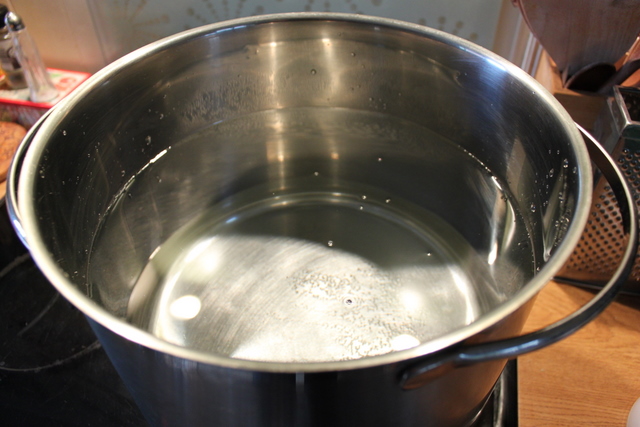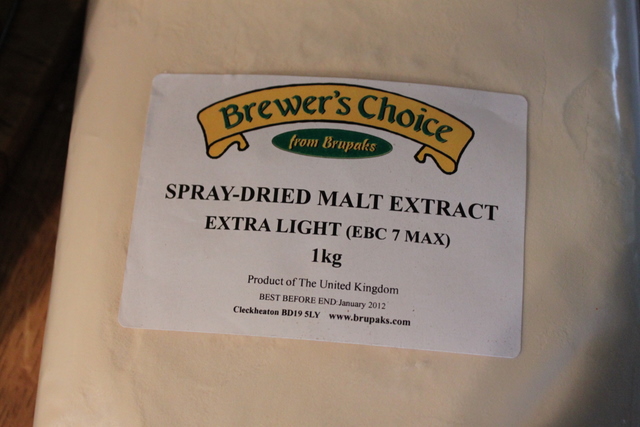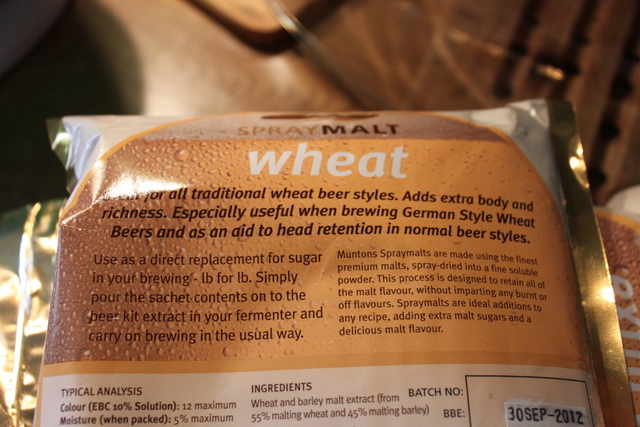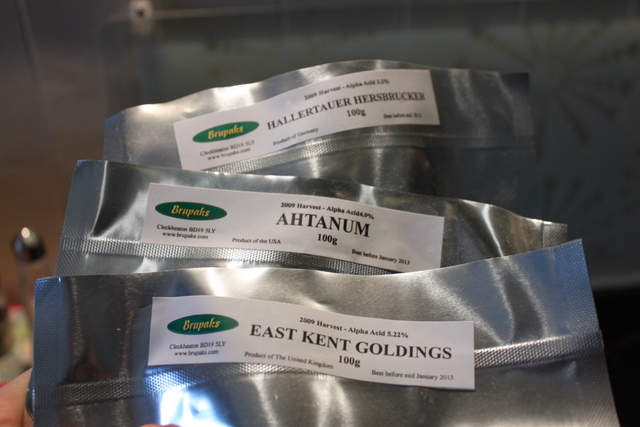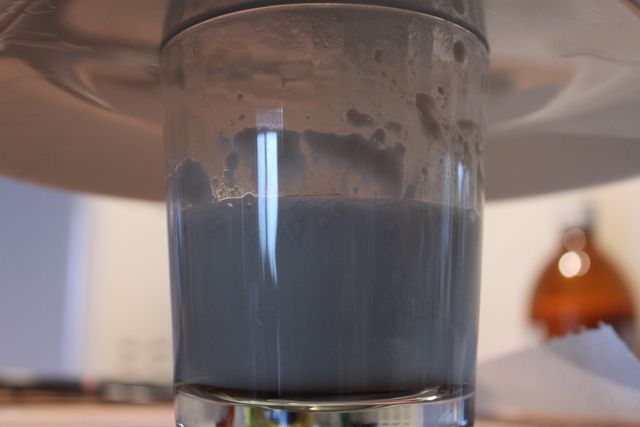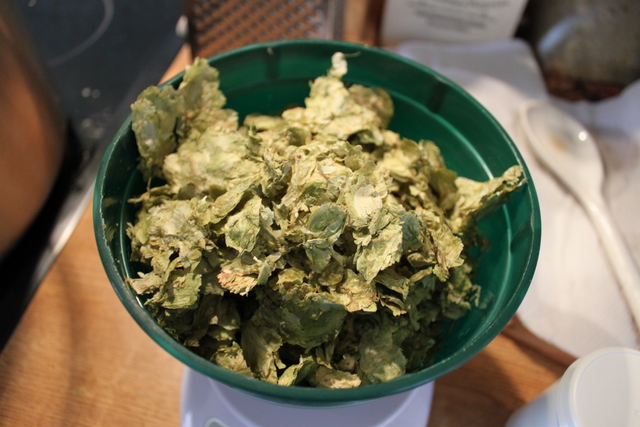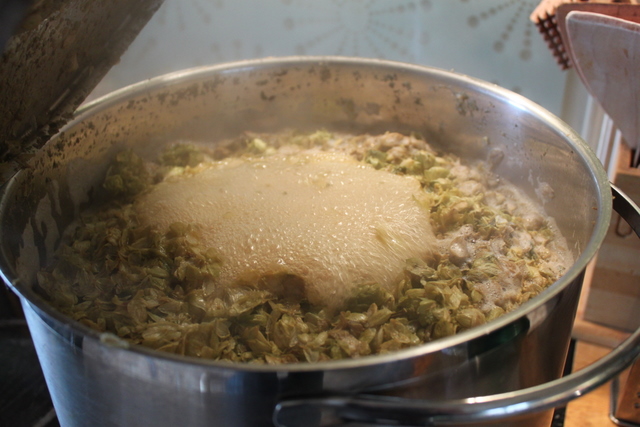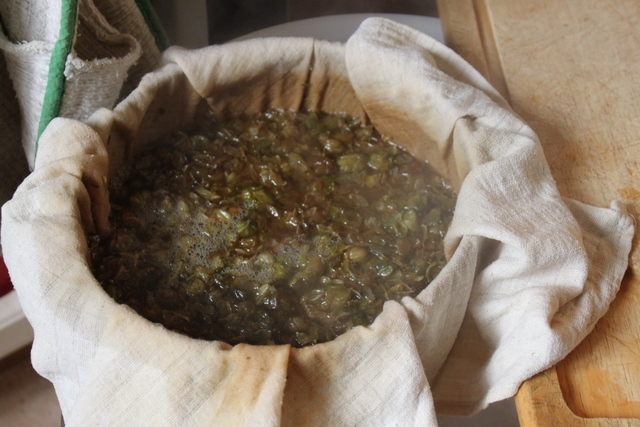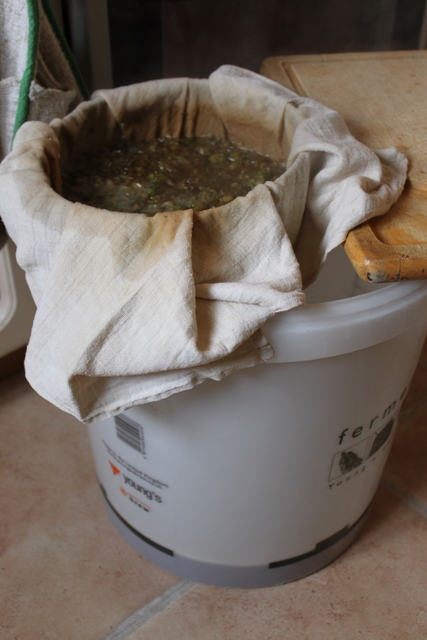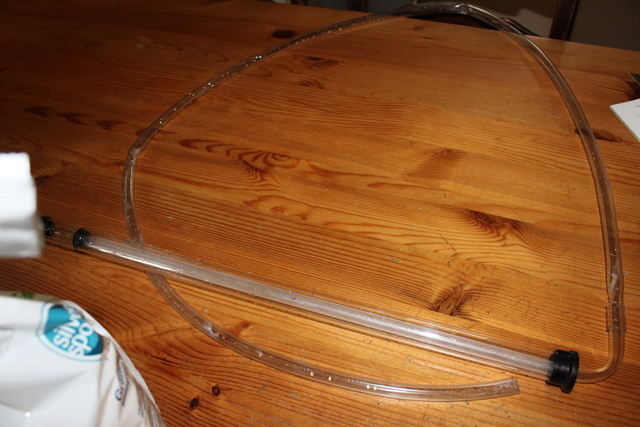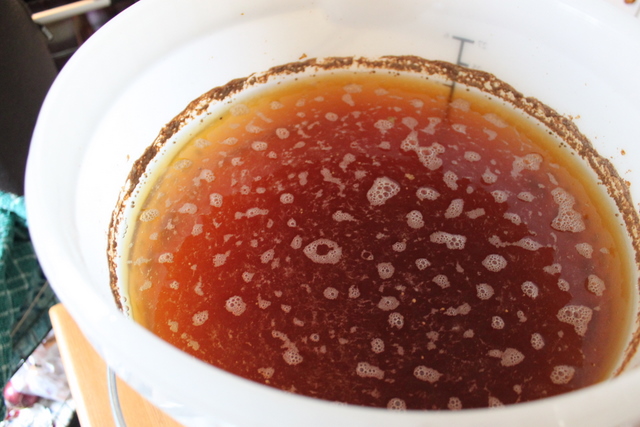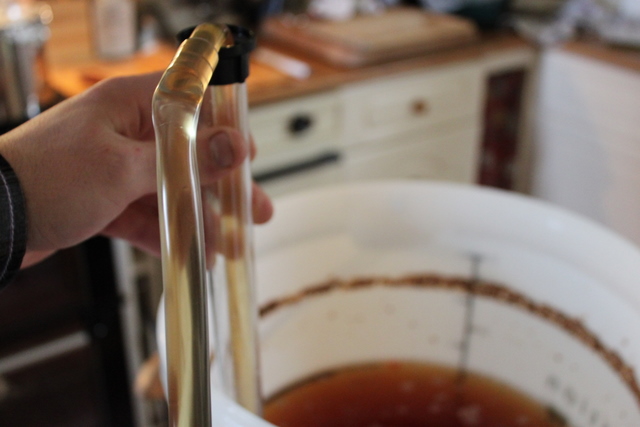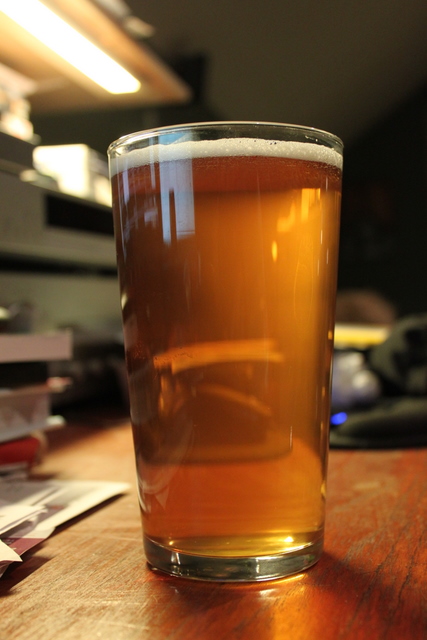I’ve been drinking my latest ale. This time I’ve devised my own recipe using extra pale barley malt extract, wheat extract and 3 varieties of hops; East Kent Goldings, Ahtanum and Hallertauer Hersbrucker. I decided to boil as much water as I can which is about 10 litres with the stock pot we have.
The final volume of beer is 23 litres which is what I’ve calculated the hop usage / bitterness for. To get roughly the right hop utilisation I’ve started the boil with 1.5KG of the extra light malt extract. If the malt is more concentrated in the boil than the final product will be then there is less utilization of the alpha acids from the hops, meaning the beer will be less bitter than I have calculated it for.
The hops came in 100g packets which is enough for two batches. There will be some left over but with some adjustments to this recipe I may well use some of them for dry hopping my next batch.
I went for a 90 minute boil starting with 40g of Goldings. With about 30-40 minutes of the boil left I decided to make a yeast starter for this one which I’m sure was beneficial. This was done by boiling 100ml of water and letting it to cool below 30C, add a tiny bit of sugar. Pitch the yeast and leave it for 15 minutes or so, give it a stir and leave it for another 15 minutes. The result is a load more yeast than you started with and it’s raring to go. I also sterilised the fermenter at this stage. At 15 minutes remaining I added a teaspoon of Irish Moss to the boil, a kilo of extra light malt extract and 500g of wheat extract (actually only 55% wheat as you can see above). With 10 minutes remaining I added 40g of Ahtanum and 40g of Hallertauer.
Hops measured and ready to go in…
Boiling away…
There wasn’t much need to stir this one a great deal. The boil was pretty vigorous and the hops were circulating the pot pretty well. The straining can take a while if you put the rest of the water through it too but I think it’s best to get everything out of the hops.
Once the wort had cooled to below 30C (it was nearly there anyway – I kept the remaining water cool outside) I put the lid on the fermenter which I’ve made a hole in. I put a beer paddle through the hole, attached a drill and went to town for a few minutes to make sure the wort was well aerated. I then pitched the yeast, took a hydrometer reading (compensating for temperature) and set the fermenter under the stairs for about 10 days starting at 22C. The last day or two were about 20C. The fermentation was fast and thorough from what I could tell. I did give it a bit of a stir after the first day but I don’t think that was even necessary.
When fermentation was complete I sterilised and primed the barrel. Using my new auto-syphon I transferred the ale to the barrel. The auto syphon is pretty good, its easy to start syphoning and easy to get it going again if it stops too. It works by pumping the inner tube, beer gets drawn in the outer tube but there is a valve at the bottom so when you push the inner tube down, the beer is forced through it. Do this a couple of times and the syphoning is on its way. It also has a longer tube so there is less chance of splashing the beer about and getting air in it which we don’t want at this stage.
After about a week or so I started “sampling” the ale by pouring a pint at a time, fnishing the pint and pouring another one – only then can you make a real judgement if it’s ready or not. I wasn’t sure so I poured another pint;) One of the hardest things about home brewing is waiting until it’s ready!!! Actually as I write this it’s about 3 weeks after it was barreled and it’s getting better and better. I’m very pleased with the result, especially as it’s a recipe I have made up from scratch. There are some things I will adjust for the next batch though. Firstly I think the fermentation temp was a bit high causing some dicetyl which gives a bit of a sweet buttery taste. I don’t think that really fits in with the style of ale I like. I used Safale S-04 which can cause this to happen, I think actaully these falvours are dropping out a bit now it’s had some time to age. Next time I think i’ll use Safale US-05 and lower fermentation temps which should give it a bit more of a clean / crisp taste. This will probably help the hop flavours come through a bit more too. I’m just starting to get some of the herby / earthy flavours from the Hallertauer through which is really nice along side the sharp citrus edge from the Ahtanum. The OG was 1.047 and the final was 1.012 giving about 4.6% ABV. There is a slight haze in the final product from the wheat but you can tell it has cleared well of everything it should have done and I think the haze gives it a nice golden glow!
Next time I think I’ll probably add a tiny bit more Ahtanum in the end and dry hop with some of the Hallertauer and the Goldings. It could go with more bittering additions I think but the hops will have been open for some time by the time I do the next one. While they get older the Alpha acids reduce and the Beta acids increase giving you roughly the same bittering properties as you had in the first place. The only thing is, I’ve read that the Beta acids don’t require boiling to extract bitterness so you gain more bitterness from the late addition hops as well as the early bittering additions. I think i’ll keep the bitterness about where it is at the moment which is about 30EBU.
Until next time……cheers.
